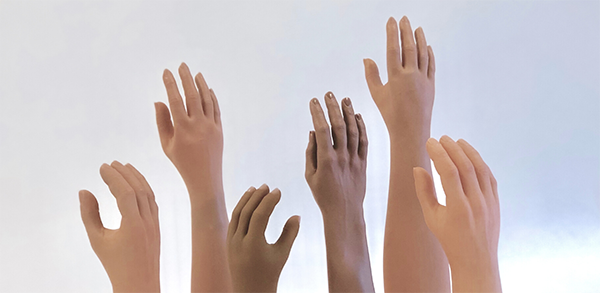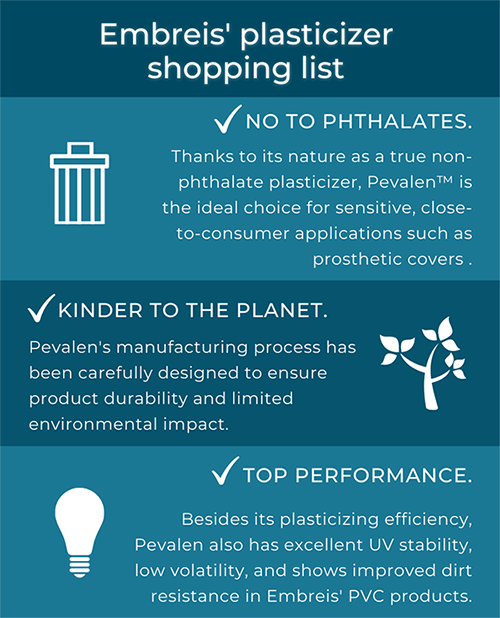How switching to a phthalate-free plasticizer improved manufacturing processes and product performance
For over 12 years Embreis has been offering orthopedic solutions for Northern Europe, providing the highest competence in the orthopedic technology industry. Collaborating with innovative partners and offering high-quality products have been the main tools in their goal of making everyday life better and easier for people with disabilities or illness. On a mission to further improve their products, Embreis has now turned to Perstorp's phthalate free PVC plasticizer Pevalen™, ensuring top performance and softness for their prosthetic covers.
‘’Such covers are commonly a part of a full prosthesis and are meant to imitate skin - in this case for arms and legs’’, explains Marcus von Warnstedt, Sales & Product Manager for Protheses. Prior to working with Pevalen, Embreis used a premixed PVC paste to manufacture prosthetic covers. In order to achieve softness and flexibility for the naturally rigid PVC, these finished mixes contained traditional phthalate plasticizers such as DOTP or DOP.
Not wanting to be dependent on a premix, Embreis decided to improve the overall quality of their products and do the compounding themselves. Carefully selecting each component would ensure a higher quality of the end product, and so the search for a new plasticizer began.
Free of phthalates without compromising on plasticizing performance
Being in a business of close-to-consumer products Embreis wanted to stay away from phthalates, whilst not compromising on the end product quality. They drew up three main criteria for a new plasticizer: free of phthalates, kinder to the environment, yet similar performance to what they were used to. After having tested samples from several manufacturers, Pevalen came out on top. ‘’Pevalen met all our criteria regarding durability and the environment, without sacrificing performance compared to the product we previously worked with‘’, says von Warnstedt.

"In our industry people usually work with either PVC or silicone for prosthetic covers. Both materials have their benefits and their challenges. Now, partly thanks to Pevalen, we have gotten close to a product that combines the beneficial characteristics of both these materials. This could be a bit of a revolution in the sector’’, he explains. ‘’An example is the fact that Pevalen has made the PVC covers much more dirt resistant and easier to keep clean, a feature usually more associated with their silicone counterparts. Also, our colleagues in the manufacturing facilities notice that Pevalen is easier to work with. For example, the extraction of the products from the moulds takes less effort than before."
Soft PVC covers with improved durability
Then of course there are improvements for the users too. ‘’Apart from their outstanding softness and flexibility, the new covers also have better shape-memory’’, says von Warnstedt. ‘’This has to do with durability. Covers need to be taken on and off the prosthesis regularly, meaning stretching the material from time to time. We notice that with Pevalen the covers keep their shape and strength much better than with the previous products.’’
